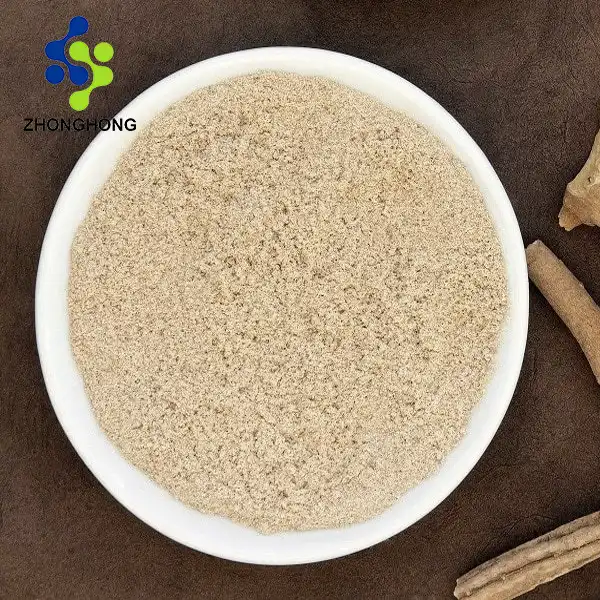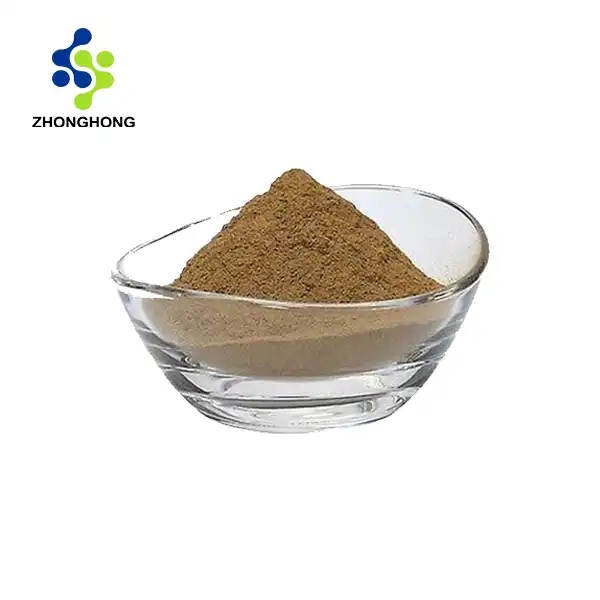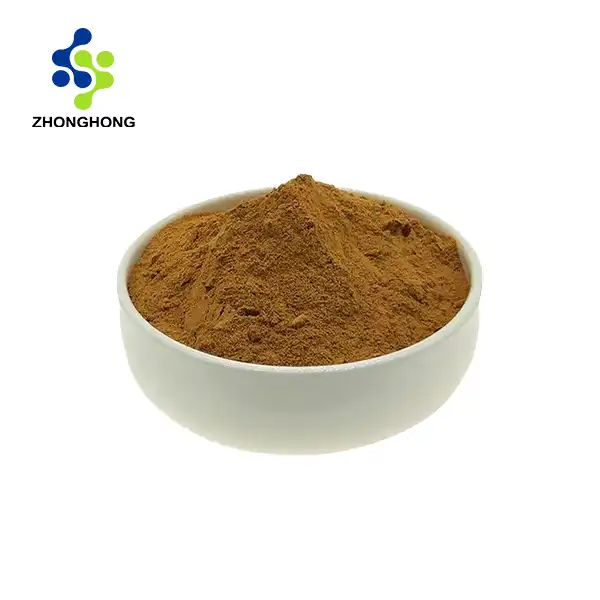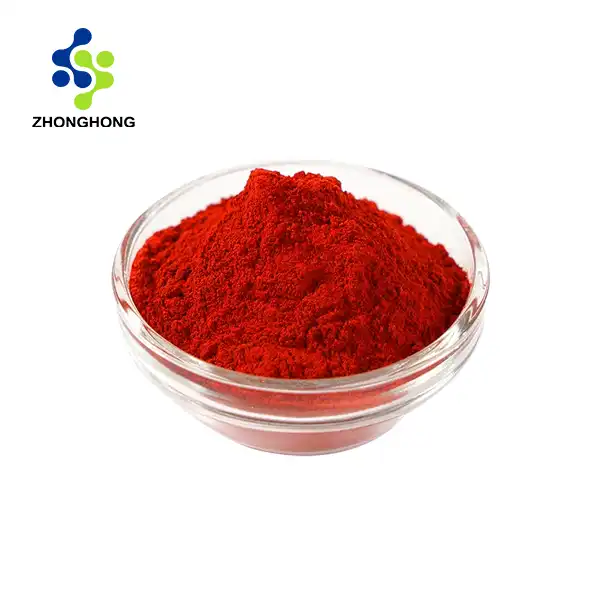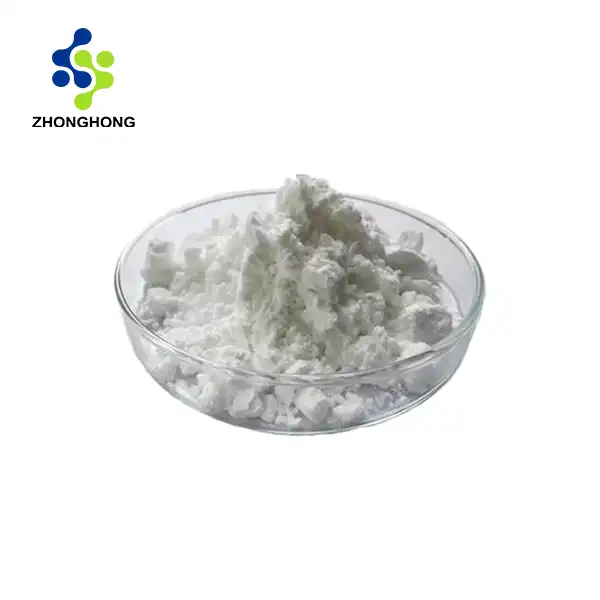Comparing Glucosamine Sulfate Powder and Glucosamine HCl
2024-11-30 17:31:33
When it comes to joint health supplements, glucosamine is a popular choice among many individuals. However, not all forms of glucosamine are created equal. Two common types you'll encounter are glucosamine sulfate powder and glucosamine hydrochloride (HCl). In this comprehensive guide, we'll explore the differences between these two forms, their potential benefits, and help you determine which might be the best choice for your joint health needs.
Differences Between Glucosamine Sulfate and HCl
Glucosamine sulfate and glucosamine HCl are both forms of glucosamine, but they have some key differences in their chemical structure and composition:
- Chemical Structure: Glucosamine sulfate contains a sulfate group, while glucosamine HCl does not. This difference in structure can affect how the body processes and utilizes each form.
- Purity: Glucosamine HCl typically has a higher purity level (around 99%) compared to glucosamine sulfate (about 74%). This is because glucosamine sulfate powder requires additional stabilizers in the form of salts.
- Absorption: Some studies suggest that glucosamine HCl may be more readily absorbed by the body due to its higher purity and lack of additional compounds.
- Dosage: Due to the difference in purity, the recommended dosages for these two forms may vary. Generally, a lower dose of glucosamine HCl is needed to achieve the same effect as a higher dose of glucosamine sulfate.
Understanding these differences is crucial when deciding which form of glucosamine might be more suitable for your specific needs.
Which Glucosamine Type is Best for Joint Health?
Determining which type of glucosamine is best for joint health can be challenging, as both forms have shown potential benefits in various studies. Here's a breakdown of how each type may contribute to joint health:
Glucosamine Sulfate
Glucosamine sulfate has been extensively studied for its potential benefits in managing osteoarthritis symptoms. Some key points to consider include:
- Synergistic Effect: The sulfate group in glucosamine sulfate may work synergistically with the glucosamine molecule to enhance its effectiveness in supporting joint health.
- Clinical Evidence: Numerous clinical trials have demonstrated the potential of glucosamine sulfate powder in reducing joint pain and improving function in individuals with osteoarthritis.
- Long-term Benefits: Some studies suggest that glucosamine sulfate may have a positive impact on slowing down the progression of osteoarthritis when used consistently over time.
Glucosamine HCl
While glucosamine HCl has been less extensively studied compared to its sulfate counterpart, it still shows promise for joint health:
- Higher Purity: The higher purity of glucosamine HCl means that a smaller dose may be needed to achieve the desired effects.
- Potential for Better Absorption: Some researchers speculate that the higher purity of glucosamine HCl may lead to better absorption in the body.
- Versatility: Glucosamine HCl is often used in combination with other joint health supplements, such as chondroitin or MSM, which may enhance its overall effectiveness.
It's important to note that the effectiveness of either form can vary from person to person. Factors such as individual physiology, the severity of joint issues, and overall health can influence how well one responds to glucosamine supplementation.
Pros and Cons of Glucosamine Sulfate and HCl
To help you make an informed decision, let's examine the pros and cons of both glucosamine sulfate and glucosamine HCl:
Glucosamine Sulfate
Pros:
- Extensive clinical research supporting its use for osteoarthritis
- Potential synergistic effect with the sulfate group
- May have long-term benefits in slowing osteoarthritis progression
- Often recommended by healthcare professionals for joint health
Cons:
- Lower purity compared to glucosamine HCl
- May require higher doses to achieve desired effects
- Contains additional salts and stabilizers
- Some individuals may be sensitive to the sulfate component
Glucosamine HCl
Pros:
- Higher purity (typically 99%)
- Potentially better absorption due to lack of additional compounds
- May require lower doses for effectiveness
- Versatile for use in combination supplements
Cons:
- Less extensive clinical research compared to glucosamine sulfate
- Lacks the potential synergistic effect of the sulfate group
- May not be as widely recommended by healthcare professionals
When choosing between glucosamine sulfate and glucosamine HCl, it's essential to consider your specific needs, any existing health conditions, and potential interactions with other medications or supplements you may be taking.
Factors to Consider When Choosing
To make the best decision for your joint health, consider the following factors:
- Personal Response: Some individuals may respond better to one form of glucosamine over the other. It may be worth trying both types to see which provides better results for you.
- Existing Research: If you're looking for a form with more extensive clinical backing, glucosamine sulfate powder may be the better choice.
- Dosage Preferences: If you prefer taking smaller doses or have difficulty swallowing large pills, glucosamine HCl might be more suitable due to its higher purity.
- Combination Products: Consider whether you want to take glucosamine alone or in combination with other joint health supplements. Glucosamine HCl is often found in combination products.
- Cost: Compare the cost-effectiveness of both forms, taking into account the required dosage and any potential discounts for bulk purchases.
- Allergies or Sensitivities: If you have any known allergies or sensitivities to sulfates, glucosamine HCl may be a safer option.
Potential Side Effects and Precautions
While both forms of glucosamine are generally considered safe for most people, it's important to be aware of potential side effects and take necessary precautions:
- Digestive Issues: Some individuals may experience mild gastrointestinal discomfort, such as nausea, diarrhea, or constipation.
- Allergic Reactions: Those with shellfish allergies should be cautious, as glucosamine is often derived from shellfish. However, many manufacturers now offer vegetarian or synthetic options.
- Blood Sugar Concerns: Glucosamine may affect insulin sensitivity and blood sugar levels. Individuals with diabetes should monitor their blood sugar closely and consult with their healthcare provider.
- Interactions: Glucosamine may interact with certain medications, including blood thinners and some cancer drugs. Always consult with a healthcare professional before starting any new supplement regimen.
- Pregnancy and Breastfeeding: There is limited research on the safety of glucosamine during pregnancy and breastfeeding. It's best to avoid use during these periods unless specifically recommended by a healthcare provider.
Recommended Dosages
The appropriate dosage of glucosamine can vary depending on the form used and individual factors. However, general guidelines include:
- Glucosamine Sulfate: Typical doses range from 1,500 to 3,000 mg per day, often divided into multiple doses.
- Glucosamine HCl: Due to its higher purity, doses are generally lower, ranging from 1,000 to 2,000 mg per day.
It's crucial to follow the dosage instructions on the product label or as recommended by your healthcare provider. Starting with a lower dose and gradually increasing it can help minimize potential side effects.
Combining Glucosamine with Other Supplements
Many individuals choose to combine glucosamine with other joint health supplements for potentially enhanced benefits. Common combinations include:
- Glucosamine and Chondroitin: This combination is popular for supporting overall joint health and may have synergistic effects in reducing joint pain and improving function.
- Glucosamine and MSM (Methylsulfonylmethane): MSM is another supplement that may support joint health by providing sulfur, a component necessary for collagen formation.
- Glucosamine and Turmeric: Turmeric, known for its anti-inflammatory properties, may complement glucosamine's effects on joint health.
- Glucosamine and Omega-3 Fatty Acids: Omega-3s, found in fish oil supplements, may work alongside glucosamine to reduce inflammation and support joint function.
When considering combination supplements, it's essential to consult with a healthcare professional to ensure the combination is safe and appropriate for your specific needs.
The Importance of a Holistic Approach to Joint Health
While glucosamine supplementation can be beneficial for many individuals, it's important to remember that maintaining joint health requires a holistic approach. Consider incorporating the following strategies alongside glucosamine supplementation:
- Regular Exercise: Low-impact activities like swimming, cycling, or yoga can help maintain joint flexibility and strength.
- Maintaining a Healthy Weight: Excess weight puts additional stress on joints, particularly in the lower body.
- Balanced Diet: Consuming a diet rich in anti-inflammatory foods, such as fruits, vegetables, and omega-3 fatty acids, can support overall joint health.
- Proper Posture and Ergonomics: Maintaining good posture and using ergonomic equipment can help reduce unnecessary stress on your joints.
- Adequate Hydration: Staying well-hydrated is essential for maintaining the synovial fluid that lubricates your joints.
By combining these lifestyle factors with appropriate supplementation, you can create a comprehensive approach to supporting your joint health and overall well-being.
Conclusion
Choosing between glucosamine sulfate powder and glucosamine HCl ultimately depends on your individual needs, preferences, and how your body responds to each form. Both types have shown potential benefits for joint health, with glucosamine sulfate having more extensive clinical research backing its use. When deciding which form to use, consider factors such as purity, absorption, dosage requirements, and any existing health conditions or medications you may be taking. It may be helpful to consult with a healthcare professional to determine the best option for your specific situation. If you want to get more information about this product, you can contact us at liaodaohai@gmail.com.
References
1. Reginster, J. Y., et al. (2001). Long-term effects of glucosamine sulphate on osteoarthritis progression: a randomised, placebo-controlled clinical trial. The Lancet, 357(9252), 251-256.
2. Clegg, D. O., et al. (2006). Glucosamine, chondroitin sulfate, and the two in combination for painful knee osteoarthritis. New England Journal of Medicine, 354(8), 795-808.
3. Henrotin, Y., et al. (2012). Physiological effects of oral glucosamine on joint health: current status and consensus on future research priorities. BMC Research Notes, 5(1), 1-11.
4. Towheed, T. E., et al. (2005). Glucosamine therapy for treating osteoarthritis. Cochrane Database of Systematic Reviews, (2).
5. Aghazadeh-Habashi, A., & Jamali, F. (2011). The glucosamine controversy; a pharmacokinetic issue. Journal of Pharmacy & Pharmaceutical Sciences, 14(2), 264-273.
6. Bruyère, O., et al. (2016). A consensus statement on the European Society for Clinical and Economic Aspects of Osteoporosis and Osteoarthritis (ESCEO) algorithm for the management of knee osteoarthritis—From evidence-based medicine to the real-life setting. Seminars in Arthritis and Rheumatism, 45(4), S3-S11.
_1728976869676.webp)
